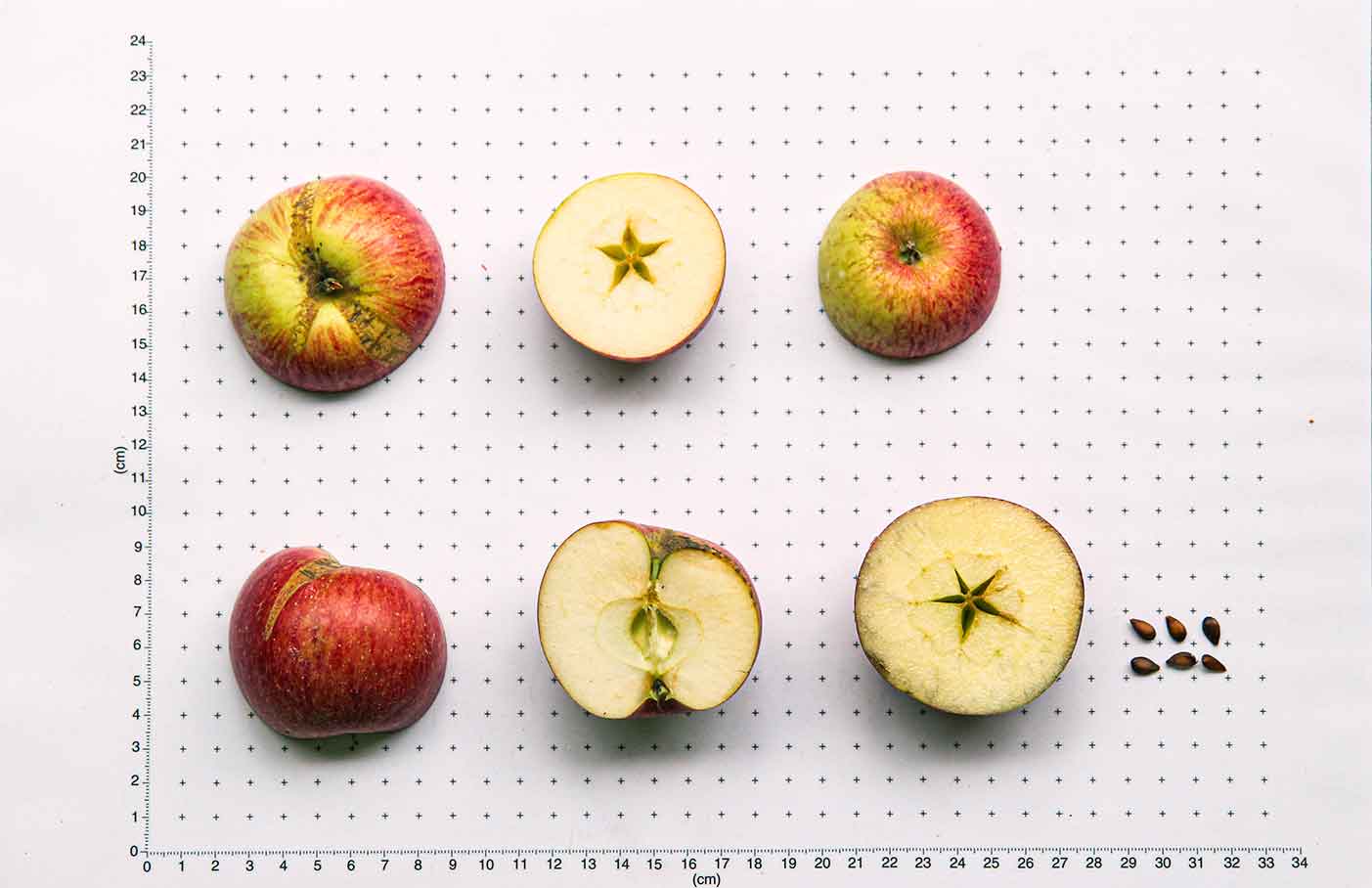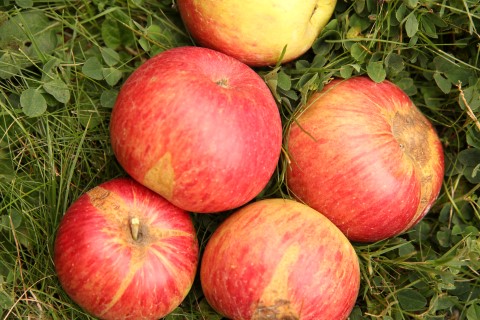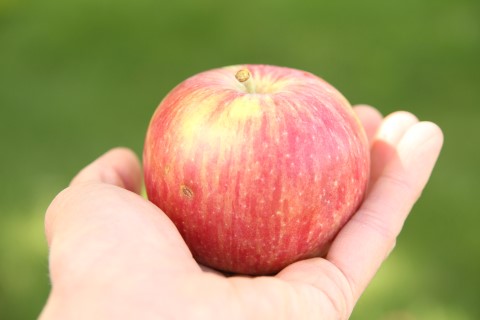Wealthy

Fruit Description
Size: Small to medium, varying on tree especially in older orchards or when unthinned.
Shape: Round to conical; at times lopsided.
Skin: Carmine to red stripes set against whitish-yellow to whitish-green ground color. Sometimes visible white lenticels (dots). Bultitude Group 4.
Stalk (stem) and Cavity: Stalk protruding, length variable, can seem long on small fruit. Cavity deep, narrow to broad, occassional russetting in cavity radiating, especially in years with wet springs.
Basin: Variable depth, usually shallow to medium in depth, narrow to broad, smooth, symmetrical.
Calyx: conical to funnel.
Core (vertical): Small to medium, symmetrical (axile) to slightly abaxile, core lines clasping or meeting.
Carpels and axial sac (transverse): Mostly narrow, sometimes broad closed to partially open, narrowing toward base and apex (infexion to point).
Flesh: Whitish-cream, occasional red streaks. Crisp, fine-textured, tender, very juicy.
Flavor: Sweet, sub-acid, sprightly, somewhat aromatic.
 Additional Notes
Additional Notes
Synonyms: N/A
First Recorded: 1860, introduced 1868
Origin: Minnesota (breeder Peter Gideon)
Bloom time: Early to Mid
Harvest: Early to mid, prolonged ripening on tree with many fruits dropping early.
Use: Dessert or cider.
Storage: Good
Disease: Susceptible to scab, fire blight and powdery mildew. Very susceptible to juniper-apple rust.
Parentage: 'Duchess of Oldenburg' x 'Jonathan' (Muranty, H. et al.)
Frequency in Montana Orchards based on DNA testing: High
Look alikes: 'Duchess of Oldenburg' and 'Baldwin'.
History
The 'Wealthy' apple was first introduced in 1868, as a cold hardy apple able to withstand the harsh prairie winters of the Upper Midwest. It's introduction was an important milestone in pioneer settlement of the West as it was one of the first apples proven to withstand the harsh winters common to states like Minnesota, Wyoming and of course Montana where it remains one of the most widely planted apples in heritage orchards. In 1900 it was noted as one of the hardiest varities growing in the state as well as one of the most successful. It was planted around the Bitterroot and Missoula valleys but also to the north in the Flathead, Great Falls and East of the Divide.
Peter Gideon, planted the 'Wealthy' from seeds he acquired in 1860 or 1861 from a grower in Bangor, ME. As the story goes, Gideon used his last few dollars to purchase the seeds which would eventually lead to propagation of one of America's most prized apples. Gideon achieving his life long goal of growing apples for a Minnesota winter, named the apple for his wife Wealthy Hull. Gideon went on to start the apple breeding program at the University of Minnesota where he introduced several other cold hardy apples including the 'Martha Crab', 'Excelsior' and of course, 'Gideon'. Until recently, it was believed a Siberian crab was one of parents, imparting the cultivar's cold hardiness. However, DNA testing revealed 'Wealthy' is a cross between 'Duchess of Oldenburg' and 'Jonathan'.
With a mild subacid flavor and a big juicy crunch, 'Wealthy' is best eaten fresh but has also been used for fresh and hard cider and can store for a few months, if kept cool.
Additional Photos




References:
Beckerman, J. Disease Susceptibility of Common Cultivars. Purdue Extension BP-132-W (2006). https://www.extension.purdue.edu/extmedia/BP/BP-132-W.pdf
Duin, Edgar C. "Peter Gideon Pioneer Horticulturalist." Minnesota Historical Society (1974). Accessed online 12/22/20. http://collections.mnhs.org/MNHistoryMagazine/articles/44/v44i03p096-103.pdf.
Muranty, H., Denancé, C., Feugey, L. et al. Using whole-genome SNP data to reconstruct a large multi-generation pedigree in apple germplasm. BMC Plant Biol 20, 2 (2020). https://doi.org/10.1186/s12870-019-2171-6
Volk, G. M., & Henk, A. D. (2016). Historic American Apple Cultivars: Identification and Availability,Journal of the American Society for Horticultural Science J. Amer. Soc. Hort. Sci.,141(3), 292-301. Retrieved Feb 15, 2021, from https://journals.ashs.org/jashs/view/journals/jashs/141/3/article-p292.xml
Woody, F. L. “The First Fruit Trees in Montana”. Proceedings of the Twelfth Annual Session of the Montana Horticultural Society, Billings, Feb. 9-11, 1909: 30.

